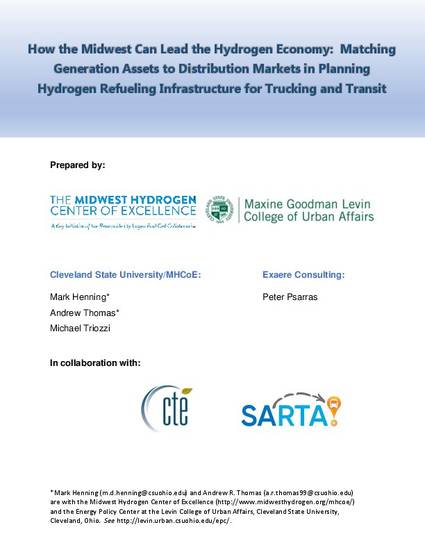
Hydrogen-powered fuel cell electric vehicles provide one important path to decarbonization in transportation, particularly for heavy-duty applications such as transit and trucking. Both fleet types face a common challenge in transitioning to low emission fuels: how to economically support one-to-one replacement of conventional diesel vehicles, especially with respect to range and refueling time. This study explores the regional assets along a major freight corridor from Pittsburgh to Minneapolis that could enable a hydrogen refueling infrastructure for transit agencies and long-haul trucking, the likely early adopters of low-emission hydrogen fuel cell electric vehicles. Among the assets available along this corridor are nuclear power plants, which can be repurposed in part to generate carbon-free hydrogen. The proximity of these plants to current and future hydrogen consumers in transportation and industry could minimize delivery costs and help smooth the balance between supply and demand.
Available at: http://works.bepress.com/andrew_thomas1/145/
